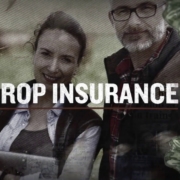New York Farmers Rely on Crop Insurance to Manage Risk
Apple farmer and agri-tourism business owner Matthew Critz got up on New Year’s morning last year to a beautiful winter day in central New York.
Not a cloud in the sky. Wall-to-wall sunshine.
“I look outside at the thermometer and it says 30 below,” he recalled. “And it’s even colder in my orchard. We lost 70 percent of our crop in about three hours that morning.”
Without apples, his business would die. Critz Farms, in Cazenovia, is an easy drive from Syracuse and attracts about 70,000 visitors a year. He sells apples, blueberries, maple syrup and Christmas trees along with brewing beer and hard cider.
“If we don’t have apples, people don’t come,” he says.
Crop insurance saved Critz last year and allowed him to purchase enough apples to make up for the shortfall caused by Mother Nature.
“It did provide quite a good cushion for us,” he says.
National Crop Insurance Services visited farms across central New York as part of our mission to tell the first-hand stories of the farmers and ranchers who rely on the safety net provided by the federal crop insurance program.
Dairy farmer Steve Durfee in Chittenango says the large investment required for each acre he plants makes crop insurance a must. He has about 1,000 milk cows, grows corn and wheat and runs a small vegetable stand mostly for the surrounding neighborhood.
“Buying insurance helps take out some of the risk,” he says. “Last year just looking at what the price of milk was and saying if it continues at this level, it would certainly put a lot of stress on our finances.”
He bought a dairy revenue protection policy to help mitigate the risk of the volatile dairy market. Fortunately, the price of milk rebounded, and he didn’t need to use the insurance.
Like all farmers, Durfee would rather sell his products at a good price than make an insurance claim.
“Crop insurance is just like all the other insurance you have,” he says. “We end up spending a lot of money on insurance, but you can sleep at night knowing if something happens, you are going to be protected partially and you will be able to rebound from it and continue on.”
Down the road in Wolcott, that peace-of-mind is something Alicia Abendroth understands. She runs Abendroth’s Apple Ridge Orchard with her brother and father. They’ve been in business about 6 years.
“For my brother and I, this is a huge deal and we want to grow this,” she says.
As a young farmer, and a young family business, protecting the investment they make in each apple tree is critical to make sure the business grows.
Hail in August this year damaged a crop of early apples right before harvest.
“When something like that happens, there is nothing you can do,” she says. “You just kind of watch it fall. We utilize crop insurance when incidents like that happen that are completely beyond our control. And we are thankful we have it because it’s saved our lives. Crop insurance has helped my dad sleep better at night.”
Central New York is a wonderful place to farm with generally good growing conditions and easy access to large populations of consumers. But here, like the rest of America’s farm country, Mother Nature can be unforgiving.
Back in Cazenovia, that’s something Matthew Critz says he never forgets.
“Your worst risk is weather,” he says. “And if you can cushion that risk with crop insurance, you gotta do it because farming is such a risky business.”
View more stories from across the country at cropinsuranceinamerica.org.


